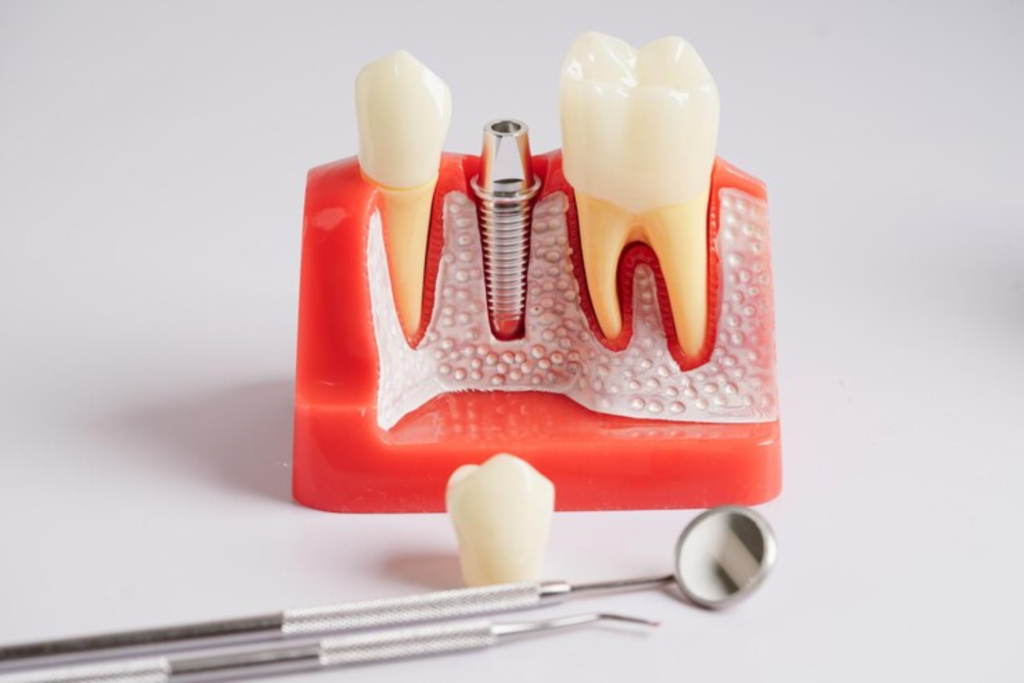Getting a dental implant is a significant step towards restoring your smile and dental function. However, the success of the procedure largely depends on how well you care for yourself afterward. One crucial aspect of post-implant care is understanding the necessary resting period for optimal recovery.
After your dental implant procedure, allowing your body adequate rest is paramount. This not only aids in minimizing discomfort but also supports the healing process.
How many days should you rest?
Let’s explore the timeline and guidelines that ensure a smooth recovery journey.
In this blog, we’ll delve into the stages of post-operative rest, from immediate recovery tips to long-term care strategies. Understanding these phases will empower you to make informed decisions about your recovery, ensuring that you achieve the best possible outcome from your dental implant procedure.
Immediate Post-Operative Period
Immediately following your dental implant procedure, you may experience some discomfort and swelling. This is normal and can be managed with prescribed pain medications and cold compresses. Your mouth may feel numb or sore from the anesthesia, and there may be minor bleeding at the implant site.
Activities to Avoid
- Strenuous Physical Activity: Refrain from rigorous exercise or heavy lifting, as this can increase blood flow to the implant area and lead to complications.
- Smoking: Smoking delays healing and increases the risk of implant failure.
- Touching or Disturbing the Implant Area: Avoid touching the surgical site with your fingers or tongue to prevent infection or dislodging of the implant.
Initial Rest Recommendations
- Bed Rest: Take it easy for the first few hours after surgery. Resting with your head elevated can help reduce swelling.
- Soft Diet: Stick to soft, cool foods that are gentle on your mouth and easy to chew.
- Hydration: Drink plenty of water to stay hydrated, but avoid using a straw, as the suction can disrupt the healing process.
First 24-48 Hours
Detailed Instructions for the First Day or Two Post-Surgery
Immediately after your dental implant surgery, follow these detailed instructions to ensure a smooth recovery:
- Pain Management: Take prescribed pain medications as directed to manage discomfort. Over-the-counter pain relievers can also help, if approved by your dentist.
- Swelling Control: Apply ice packs to the outside of your face near the implant area in 15-minute intervals to reduce swelling.
- Bleeding Management: Bite gently on a gauze pad placed over the surgical site to control minor bleeding. Change the gauze as needed.
- Resting Position: Keep your head elevated with pillows to reduce swelling and promote healing.
- Hydration: Drink plenty of water, avoiding straws, which can dislodge blood clots and hinder healing.
- Soft Diet: Stick to soft foods like soups, yogurt, and mashed potatoes that require minimal chewing and won’t irritate the surgical site.
Resting Period: Days 2-7
Importance of Continued Rest and Reduced Activity
During the first week post-surgery, continue to prioritize rest and limit physical activity to aid in healing:
- Avoid Strenuous Activities: Refrain from activities that could strain the implant area, such as heavy lifting or vigorous exercise.
- Elevate Head While Resting: Maintain head elevation while resting to minimize swelling.
- Stay Hydrated: Continue drinking water to maintain hydration and support healing processes.
Dietary Recommendations and Hygiene Practices
Optimize your diet and oral hygiene routine for efficient recovery:
- Soft, Nutritious Foods: Continue consuming soft foods that are rich in vitamins and minerals to support healing.
- Oral Hygiene: Gently brush and floss your teeth, avoiding the surgical site initially. Use a prescribed mouth rinse if recommended.
Returning to Normal Activities
Signs That Indicate You Can Resume Regular Activities
As you progress through the recovery process, watch for these signs indicating you’re ready to resume normal activities:
- Reduced Pain and Swelling: Noticeable decrease in pain and swelling around the implant area.
- Healing of Incision Site: The incision site begins to close and heal properly.
- Improved Comfort: Feeling more comfortable when eating and performing daily activities.
Gradual Reintroduction of Normal Diet and Exercise
Gradually reintroduce your regular diet and exercise routine:
- Soft to Solid Foods: Start transitioning from soft foods to a normal diet as advised by your dentist.
- Light Exercise: Begin with gentle activities like walking and gradually increase intensity over time.

Long-Term Recovery
Timeline for Complete Healing and Integration of the Implant
The timeline for complete healing after a dental implant procedure can vary based on individual factors and the complexity of the surgery. Generally, it takes:
- Initial Healing: The first few weeks focus on the initial healing of the gum tissue and bone around the implant.
- Osseointegration: This process, where the implant fuses with the jawbone, typically takes about 3 to 6 months. During this period, it’s crucial to follow your dentist’s recommendations for oral care and dietary restrictions.
- Final Prosthesis: After osseointegration, your dentist will attach the final crown or prosthetic to the implant, completing the restoration process.
Tips for Maintaining Oral Hygiene and Monitoring Healing Progress
To ensure the long-term success of your dental implant, follow these tips:
- Regular Brushing and Flossing: Maintain good oral hygiene by brushing at least twice a day and flossing daily. Use a soft-bristled toothbrush and non-abrasive toothpaste.
- Avoid Hard Foods: To prevent damage to the implant and surrounding tissues, avoid hard or sticky foods that can put pressure on the implant.
- Attend Follow-Up Appointments: Schedule and attend regular check-ups with your dentist to monitor the healing progress and ensure the implant is functioning properly.
- Watch for Signs of Complications: Be vigilant for signs of infection, such as increased pain, swelling, or discharge from the implant site. Contact your dentist immediately if you notice any concerns.
Understanding the resting period after getting a dental implant is crucial for a smooth recovery. By following these guidelines, you can ensure optimal healing and long-term success of your implant. Remember to consult your dentist for personalized advice throughout your recovery journey.




